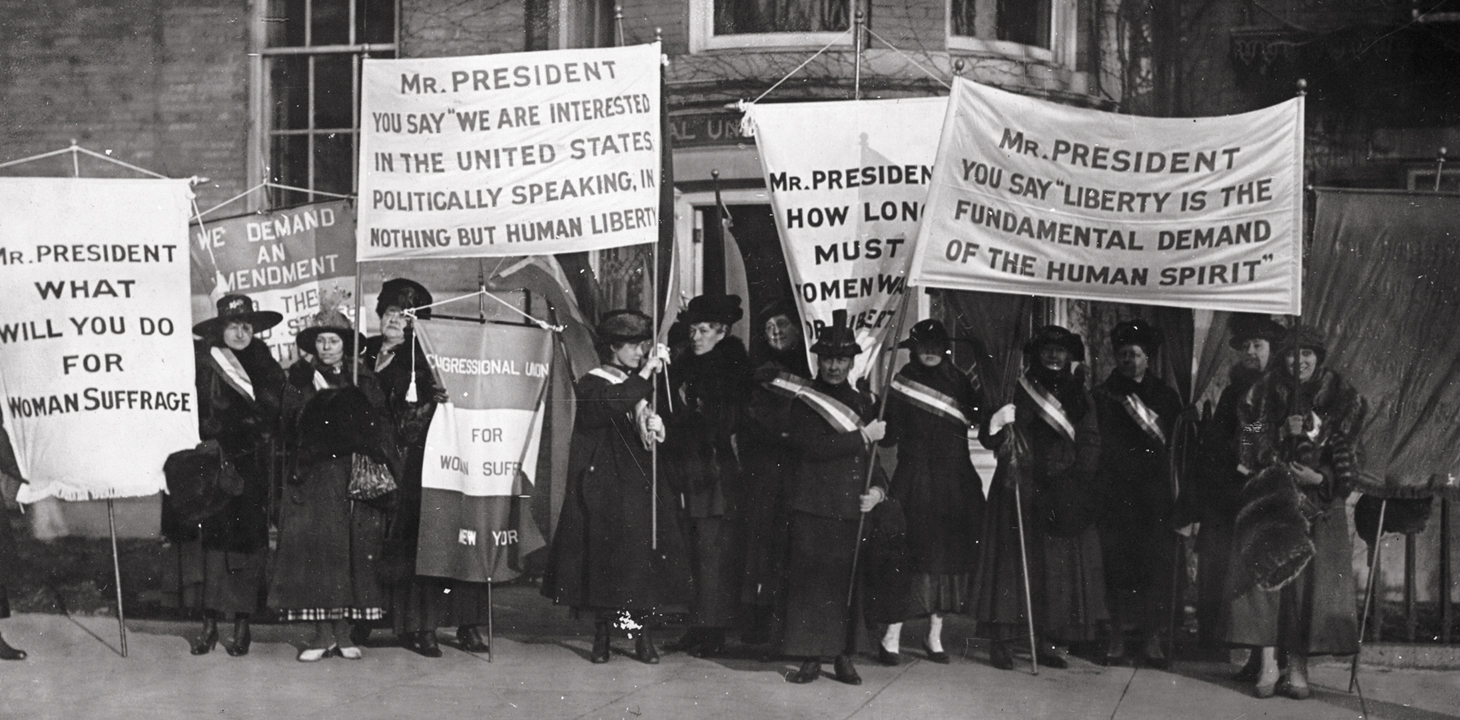Old Gold: The Road to Voting Rights and Respect
 PHOTO: LIBRARY OF CONGRESS
In this Library of
Congress photo
from 1917, suffragists
picket in front of the
National Woman's
Party headquarters in
Washington, D.C.
PHOTO: LIBRARY OF CONGRESS
In this Library of
Congress photo
from 1917, suffragists
picket in front of the
National Woman's
Party headquarters in
Washington, D.C.
A presidential election year is almost upon us, and Old Gold plans not only to caucus and vote, but also to celebrate the centennial of the 19th Amendment to the U.S. Constitution ensuring equal suffrage for women.
It's true: For nearly 150 years, most women in the U.S. did not enjoy the same voting privileges as men. The ideals the amendment promised in 1920, however, eluded Native Americans, who weren't declared citizens until 1924 and were not guaranteed the right to vote in every state until 1962. Black U.S. citizens were systematically denied the vote, especially in the South, until passage of the Voting Rights Act of 1965. Today, voter suppression is a barrier to many through such tactics as gerrymandering of legislative and congressional districts, intimidation, reduction of polling places, and voter roll purges.
The struggle for equal voting rights has been on a long and contentious road. By suffrage leader Carrie Chapman Catt's reckoning, it took 72 years—from the first women's rights convention at Seneca Falls, New York, in July 1848 to the enactment of the 19th Amendment on Aug. 18, 1920. (Catt, a product of Iowa education, graduated from Charles City High School in 1877 and from Iowa Agricultural College in Ames in 1881.) Other efforts to expand and protect voting rights have been decades in the making and continue today.
By contrast, the 26th Amendment lowering the voting age to 18 was passed and ratified in three months, during spring and summer 1971. It remains the shortest period on record for an amendment to the Constitution to be approved, from congressional passage—through states' ratification—to the Secretary of State's signature.
Why the quick turnaround time? Perhaps it was the temper of the times. In protests during the Vietnam War, students on campuses nationally—including at the UI—often chanted, "If I'm old enough to fight, I'm old enough to vote." The National Education Association launched a campaign in 1969, and in the following year President Richard Nixon signed the Voting Rights Act of 1970. The law was short-lived, however: The U.S. Supreme Court struck it down as unconstitutional. The focus then shifted to amending the Constitution, and in 1971 the Senate and House passed the resolution, followed by ratification by the needed 38 states.
The president of the University of Iowa at the time may have played an influential role in adoption of the amendment. In his recently published memoir, A Life on the Middle West's Never-Ending Frontier, Willard "Sandy" Boyd (81LHD) recalled attending a meeting of university and college presidents with Nixon at the White House in 1970 to discuss campus unrest and other issues affecting higher education.
"I proceeded to urge him to sign pending legislation setting the age of majority at 18, my point being that if 18-year-olds are subject to the military draft, they ought to be able to vote and otherwise be treated as adults," Boyd wrote. "[Nixon] was attentive but noncommittal. Once I completed my few remarks, I relaxed in the chair feeling that I had really been cool. When I took my hand off the table, however, I noticed a pool of perspiration where it had been."
Less than a day later, Nixon signed the lowered-voting-age bill into law. "I am sure he had decided to do so before he met with [the university presidents], but it is possible that mine was the last outside opinion he heard on the subject, and I strongly endorsed the legislation," Boyd wrote. While the law was struck down by the nation's highest court later that year, it set the stage for a constitutional amendment.
For more UI history, visit our Old Gold archive.
